Dispatches from Paradise: Journeys across Tawi-Tawi and Sulu
(Bangsamoro Local Governments Minister Naguib Sinarimbo managed to find time to write down notes on the inaugural Philippine Airlines’ Cotabato to Tawi-Tawi flight on June 9 and the return flight from Tawi-Tawi to Cotabato on June 13. Between June 9 and 13, he visited several towns in Tawi-tawi and Sulu for groundbreaking rites of projects such as construction of town halls and a reformation center, as well as inspection of desalination projects. The Cotabato-Tawi-Tawi-Cotabato flight is twice weekly, on Mondays and Thursdays)
We joined the inaugural direct flight of the Philippine Airlines from Cotabato City to Tawi-Tawi on Thursday, June 9 and took the opportunity to break ground and inspect several projects in the island municipalities of Tawi-Tawi and Sulu.

This trip has been very productive and in between we took advantage to enjoy the natural beauty that the island provinces offer.
Upon arrival in Bongao, Tawi-Tawi’s capital town, we immediately proceeded for the groundbreaking rites of the New Government Center of Bongao.
During this ceremony, we handed over to Mayor Jimuel Que half of the 25 million pesos commitment that we made to him when we held our Management Committee meeting in Bongao last year.
From Bongao, we went to Simunul to break ground for another project — the Simunul Port Terminal and Tourism Center.
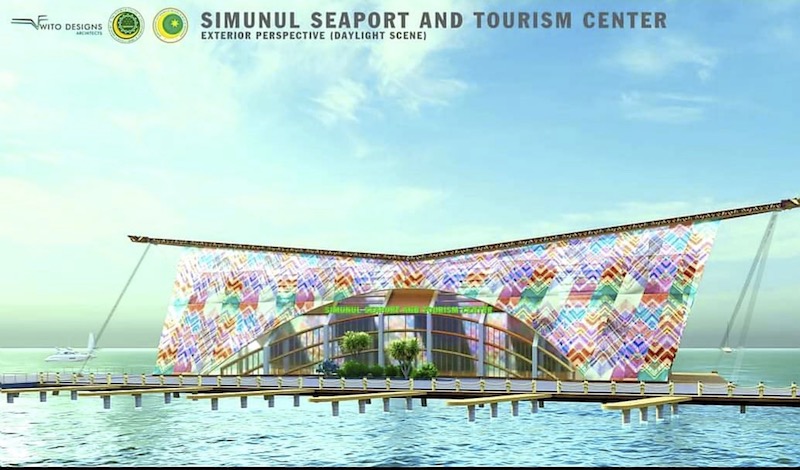
This project is a partnership between our ministry, the Province of Tawi- Tawi and the municipality of Simunul. We also handed to the provincial government half of the 50-million-peso budget for this project.
Our hope is that these projects will enhance further the capacity of the local government units (LGUs) in this new tourism destination — Tawi-Tawi — and its beautiful people.
We spent the night in the beautiful island municipality of South Ubin, Tawi-Tawi on our way to Sulu.
South Ubian lies at the boundary between Tawi-Tawi and Sulu. We reached the shores of the island of Tabawan at dusk and we needed to transfer to a smaller boat as the water was shallow and there is no pier in this island.
Mayor Hadzri Matba generously treated us to an evening of cultural presentation and of course sumptuous dinner.
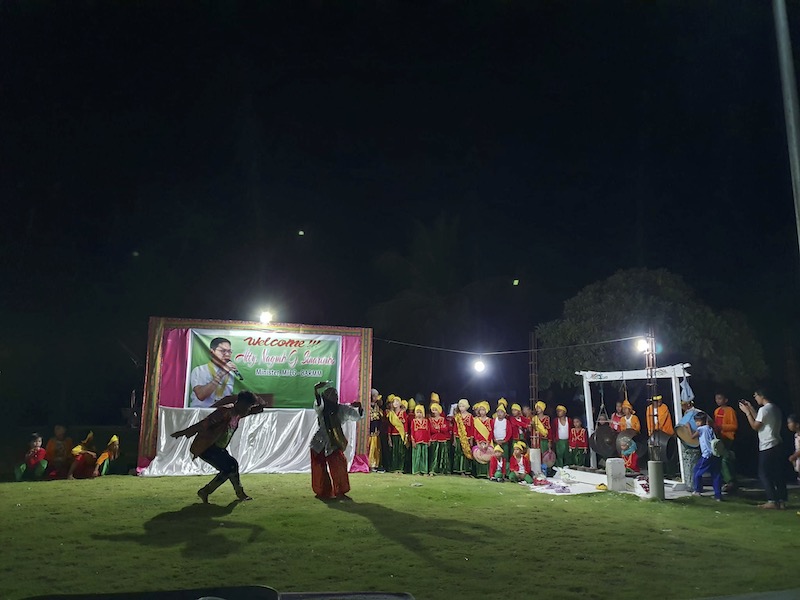
In the morning of June 10, we broke ground for the construction of the South Ubian Municipal Hall. It was raining but it never dampened our spirit.
We also took the opportunity to check on our desalination project for this town.
The whole municipality of South Ubian, including Tabawan, one of the major island settlements of South Ubian is surrounded by water but has no potable water supply.
Total adventure
More than the natural beauty of this place, it is also the hospitality and the generosity of the people here that are truly captivating. We are already looking forward to visiting this island again even before we can leave.
The journey to the next island, the municipality of Lugus was a total adventure.
Our journey continued on to the island municipality of Lugus in Sulu. To get to Lugus, we needed to cross the Siasi channel, a body of water that separates the group of islands in the province of Sulu and the cluster of islands of the province of Tawi-Tawi. This is also where the Celebes Sea meets the Sulu Sea. The old folks in South Ubian were telling us that any newcomer to the islands will always be greeted with a rough sea by the channel.
It was raining when we left just before noontime the island of Tabawan on our way to Lugus. True enough, the sea was rough and I was concerned, though I maintained a stoic face, because some of us do not even know how to swim.
Engr Bob, our Project Management and Development Division Chief, was monitoring our progress through an app on his mobile phone and was complaining that the direction of the speedboat was towards Pangutaran and not Lugus.
Our expert speedboat navigator nonetheless persisted and we were all showered with seawater as the boat battled the waves. In the end, we were all relieved when the operator gradually moved towards the right and we saw the island municipality of Lugus. These expert sea navigators are a master of their craft.
In Lugus, we were greeted by the smiling Mayor Hadar Hajiri who ushered us into his house which also serves as the temporary municipal hall of Lugus.
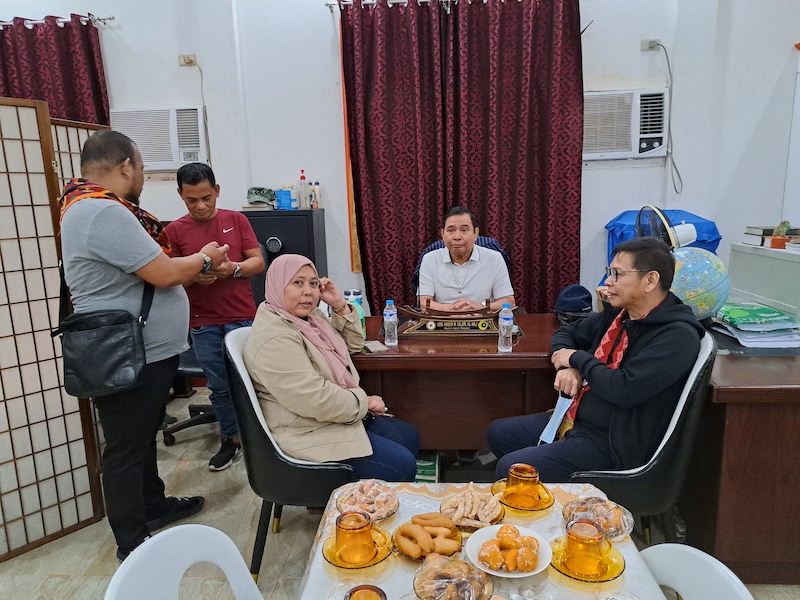
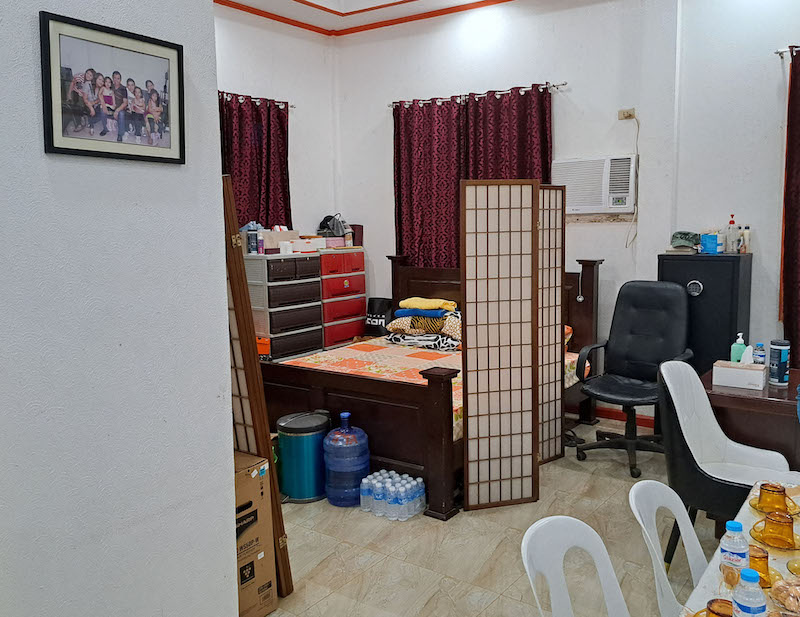
When asked by the accompanying journalists in our team why he has a bed in his office, he jokingly said that he has been hosting this municipality in his house for a long time.
A lunch of some of the most exotic seafood in the island concluded our brief meeting.
Lack of potable water
We immediately proceeded to the groundbreaking of our Municipal Hall building for this island municipality. We also handed over to the LGU half of the budget of this 25-million-peso project. It was here last year when we committed to give this municipality its permanent municipal hall. We also signed the memorandum of agreement (MOA) for the desalination machine for this municipality.
It was in this island municipality, too, where I first saw the difficulty of lack of potable water in the islands.
As we were docking here last year, I saw a boatload of people with plastic containers and I asked the mayor where those people were headed. He told me they were bound for Siasi to fetch drinking water.
Imagine crossing that channel every day to fetch water! It was then that I made a resolve to provide solution to this urgent problem of our people in the islands.
I am glad we are fulfilling that promise now.
From Lugus, we proceeded to Jolo, the capital town of the province of Sulu.
We approached the ancient port of Jolo from the east. From the sea, you immediately realize the strategic location of the port as the water is calm because of the protection from the waves provided by the cluster of islands of the municipality of Panglima Tahil.
As we gazed upon the horizon to our right, you cannot help but marvel at the natural beauty of this place with two imposing structures that lend its presence with immediacy of our vision – one is man-made and the other natural.
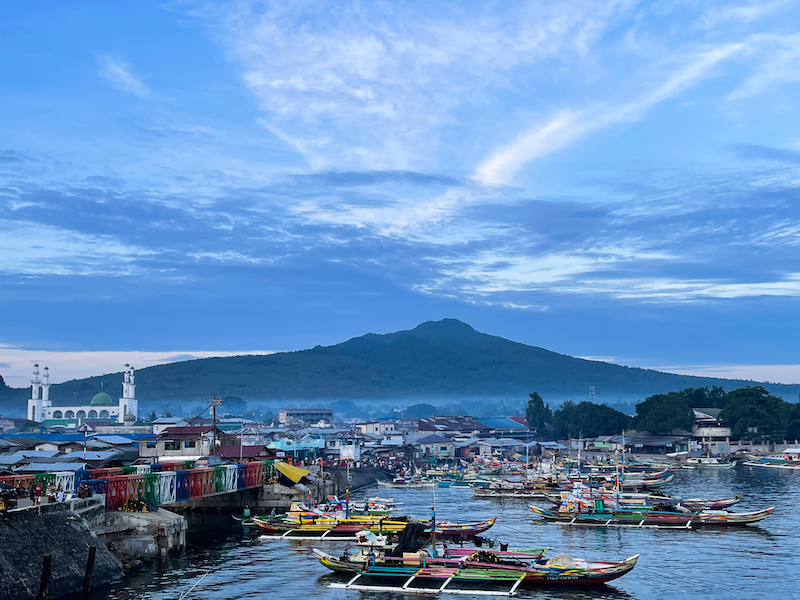
The masjid Tulay towers above the skyline of Jolo with its minarets appearing to shoot above the sky as if to transmit all the silent prayers of its people to where we all believe the answers lie.
Bud Tumantangis majestically guards the town as if to warn and remind every invader that it has fought and defeated them all throughout the generations. Old photos of this town dating back to pre-Spanish times including its trading days with China and the rest of the world framed my view of the present Jolo. There is no escaping it. It was a powerful capital and a prosperous trading post for centuries before colonization.
As we traveled inside the narrow streets of Jolo on our way to Indanan, you realize it has lost its glory and grandeur. It pains me.
Public markets, reformation center
In Indanan, we were greeted by Member of Parliament Tong Jikiri, son of the famous Moro National Liberation Front warrior Yusop Jikiri who served as Governor of Sulu from 2001 to 2004 and representative of its first congressional district from 2007 to 2010.
I was still soaking wet from the rain as well as the splash of the seawater during our travel from South Ubian to Lugus. The aroma of Kahawa Sug and the unique taste of it awakened all my senses. We truly are in Sululand now with its “coffee for the brave” or Kahawa Sug invading our taste bud.
We broke ground immediately for the construction of our Public Market for the municipality of Indanan which is a town adjoining the capital town of Jolo. We also released half of the 25-million-peso funds to the LGU for this project. Our hope is that this project would help in the economic recovery of the town and spur economic activities. It is among the many small steps that we will undertake to bring back the glorious past of this province.
As it was dusk, we immediately left for Patikul.
From Indanan, we proceeded to Patikul to break ground for the construction of a first ever Reformation Center for “rebel returnees,” in particular former Abu Sayyaf Group (ASG) members in the province of Sulu.
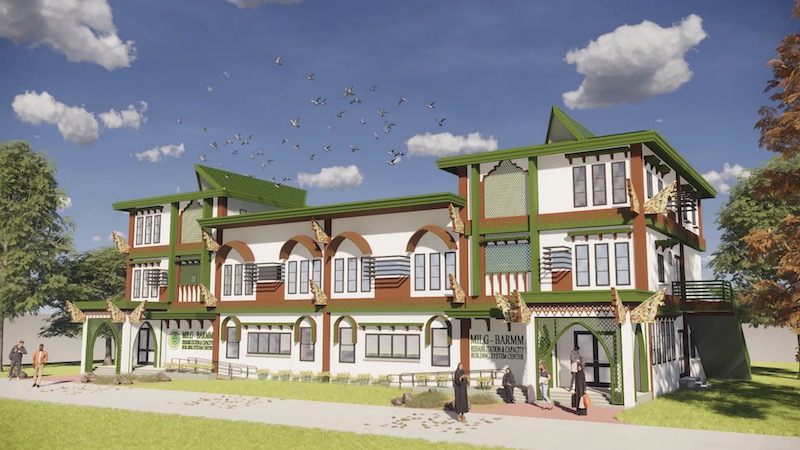
Patikul, and in particular, Barangay Langhub, where the center will be built, is a known ASG stronghold just a few years ago. In fact, while we were leaving Cotabato, our Team was still debating whether it was a good idea to put the Reformation Center in this area. I trusted the military and our locals here. And so even if it was already getting dark, we proceeded with the program just the same.
Brig. Gen. Benjamin Batara, Jr. of the 1103 Brigade and his officers as well as the LGU of Patikul under Mayor Kabir Hayudini joined us in this event. The location was in the interior and given that it rained that day, the path leading to the site was slippery.
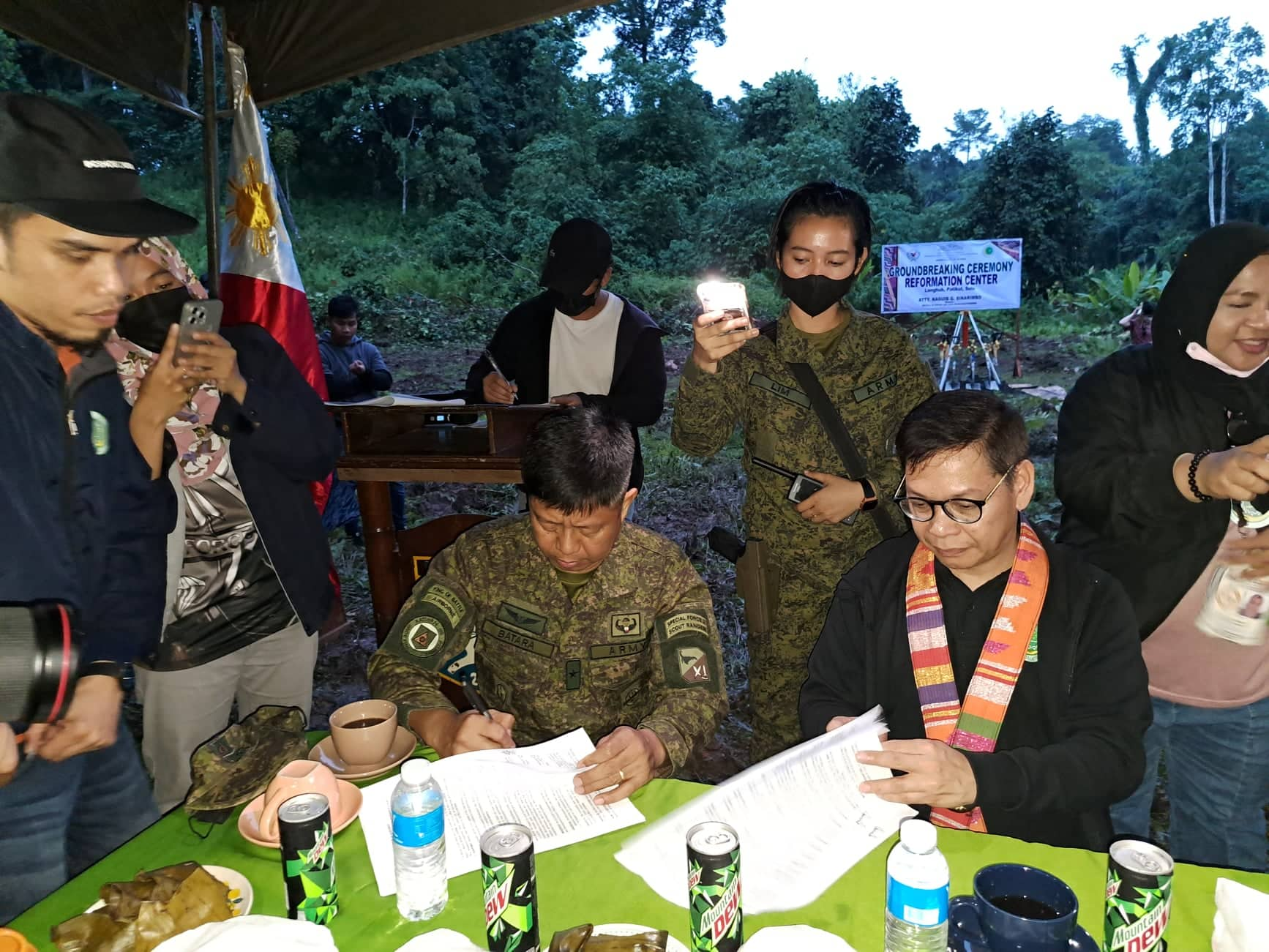
The Reformation Center will serve as the halfway house for these rebels who have decided to rejoin mainstream society. It is a complement to our Project Tugon and will serve as the venue for their skills development training as well as reorientation. This will be a safe space that will prepare them to rejoin our society and become productive members of our community. This was a project specifically requested by the Western Mindanao Command chief, Lt. Gen. Alfredo Rosario, Jr. when he paid a courtesy visit on the Bangsamoro Chief Minister (Ahod Balawag Ebrahim is oftentimes still referred to as Al Haj Murad Ebrahim, by his nom de guerre in the Moro Islamic Liberation Front – ed) last year. It is a partnership between our ministry, the LGU and our security sector.
Traveling at night: Peace taking root
We left Patikul when it was already dark and proceeded to the other end of the Sulu main island, Luuk.
Just very recently, no one dared to traverse this road at night, but here we are on a journey to the far end of Sulu and enjoying the serenity of the surroundings.
Peace, indeed, is taking root in this once troubled paradise.
Congressman Munir Arbison hosted us for a couple of days in Luuk, the emerging center of the 2nd District of Sulu.
Luuk is located in the southern tip of the main island of Sulu. We travelled at night from Indanan to Luuk and what we immediately noticed is that the roads in the second district of Sulu are well paved and are already four lanes with solar lights in the middle. Luuk both has a seaport and a small airport. A hotel is also being built here.
We broke ground the following morning (June 11) for the construction of barangay halls and a Municipal Police Station for this municipality.
We proceeded to Omar town for groundbreaking of the public market and from there proceeded to Panglima Tahil town where we inspected the desalination machine while another team inspected two desalination machines in Pangutaran town.
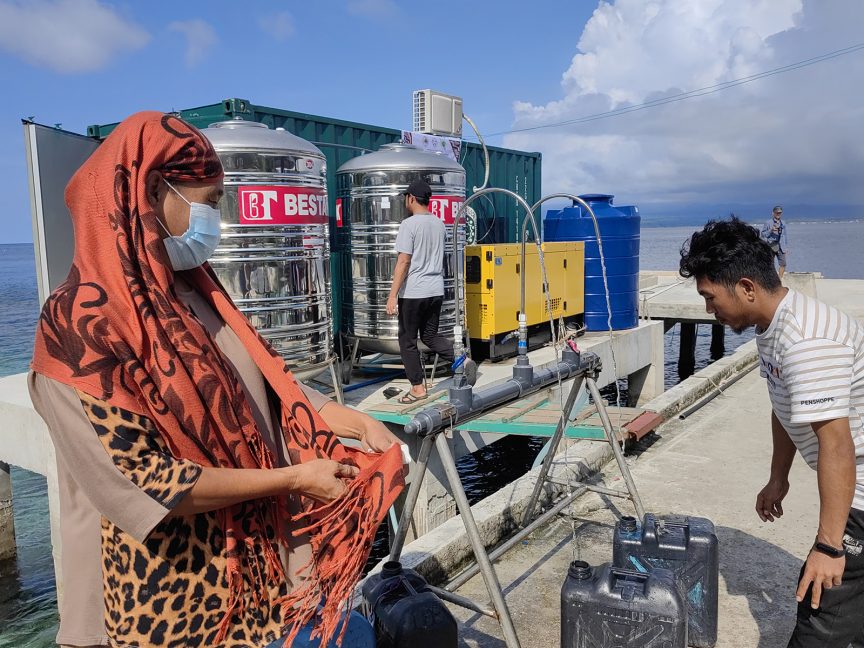
We inspected two completed barangay halls in barangays Takut Takut and Chinese Pier in Jolo and proceeded to Panglima Estino at 9 p.m. on our way back to Luuk.
At Panglima Estino, we inspected the construction of the public market there.
Project inspection and groundbreaking
For two days, Luuk became our staging point for our travels around the municipalities of Sulu both for project inspection and groundbreaking.
Cong Arbison also generously lent us his airplane to fly us from Sulu back to Bongao, Tawi-Tawi. We were also treated to great food and unparalleled hospitality.
We are truly grateful for the good Congressman and the great people of this province. We cannot thank you enough.
We left Luuk for Bongao on June 12 while another team inspected our municipal police station in Panamao, Sulu.
Back in Tawi-Tawi, we inspected the ongoing construction of the municipal buildings in Tandubas and Sapa-Sapa.
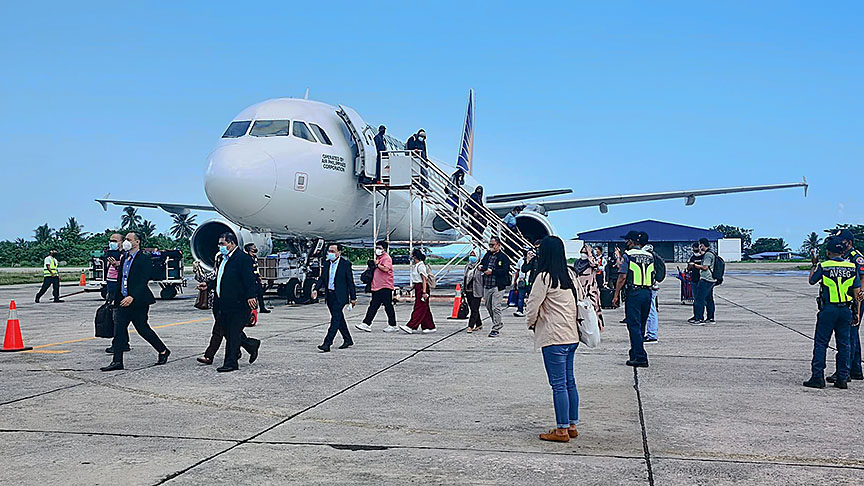
On June 13, before flying back to Cotabato City from Bongao, we inspected the ongoing construction of the Ministry of the Interior and Local Government (MILG) provincial office in Bongao.
As the airplane took off from Sanga Sanga airport, I glanced back at the receding view of the Bongao peak before our vista was enveloped by the unending blue sea. This sea, for most of us, has been the great divide that separated the mainland BARMM from its island provinces of Tawi-Tawi, Sulu, and Basilan. We have just breached this divide.



No comments:
Post a Comment